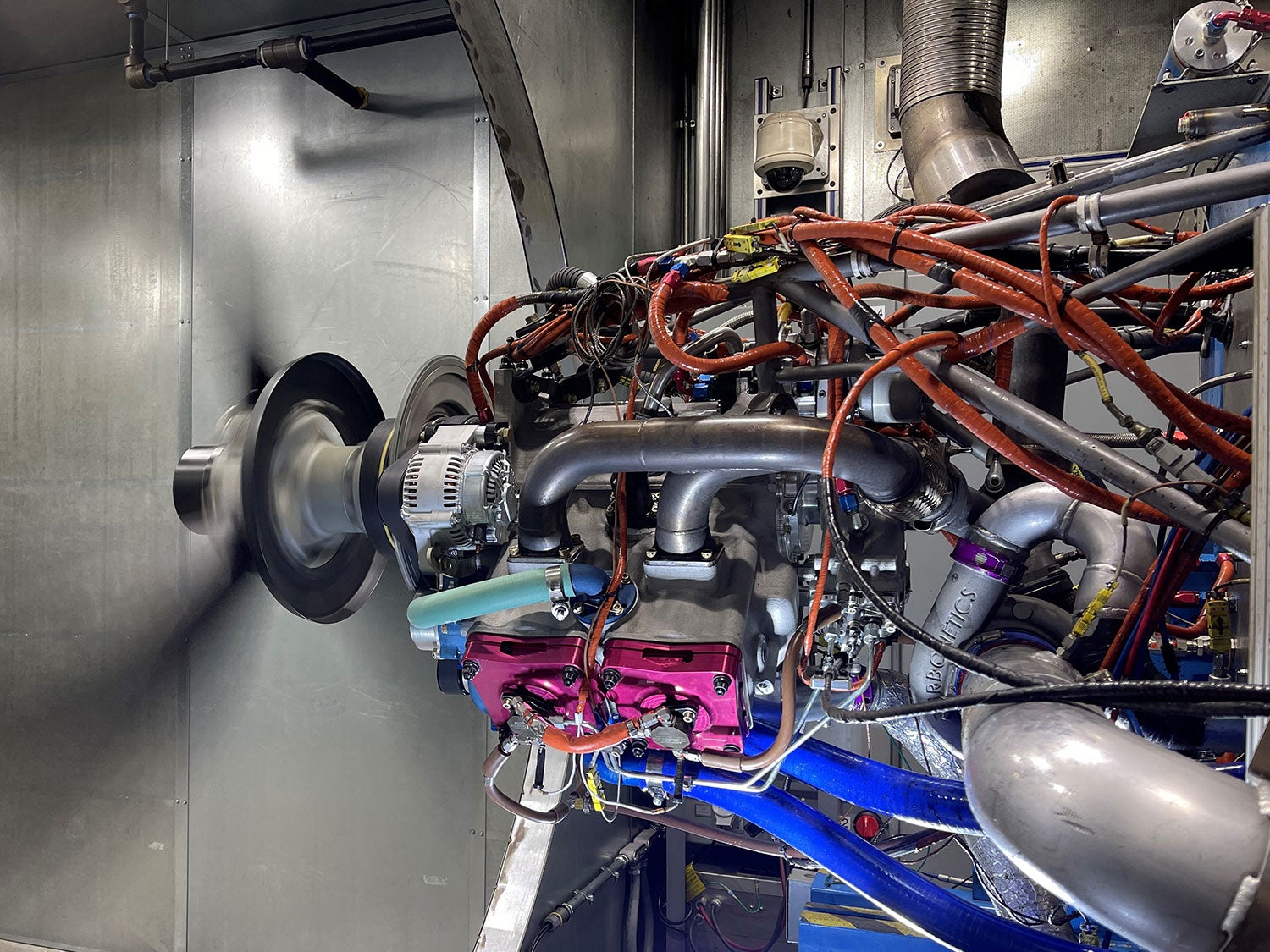 DeltaHawk Engines has addressed one of the key concerns about its four-cylinder, inverted-V engine: power to weight. In fairness, no Jet A-burning engine is particularly light but if you can boost the power without adding weight, you’re ahead of the game. So it is here, with the new DHK200 and DHK235 just announced.
DeltaHawk Engines has addressed one of the key concerns about its four-cylinder, inverted-V engine: power to weight. In fairness, no Jet A-burning engine is particularly light but if you can boost the power without adding weight, you’re ahead of the game. So it is here, with the new DHK200 and DHK235 just announced.
The company hasn’t released all the details about how the power increase came about relative to the 180-hp DHK180 but since the new engines are said to “share the same dimensions and weight of the DHK180,” it doesn’t come from additional cylinders. Instead, the more powerful engines have changes to the fuel system (to increase flow) and a larger turbocharger. DeltaHawk points out that the original DHK180 was very conservatively rated, so no internal changes were necessary with the power boost. Nor were there internal changes to the cooling system needed, though it’s likely that a larger radiator and/or oil cooler will be necessary depending on the installation.
With 200 hp on tap, the 347-pound (dry) DHK200 closes the gap to the angle-valve Lycoming IO-390 (210 hp and just under 300 pounds) but the DHK235, assuming internal modifications don’t add weight, becomes more competitive in power to weight. Fuel burn should be the engine’s real strength. DeltaHawk says the 200-hp engine will burn 8.3 gph at economy cruise and 11.4 gph at full power, while the 235-hp version will use 10.2 gph at econ cruise and 13.1 gph at full power.
DeltaHawk is saying the 200-hp model will be available in the third quarter of 2024 with the 235-hp version ready in the first half of 2025. Pricing is not yet available.
“Following FAA certification of the DHK180, customer interest and reservation deposits from aircraft OEMs and individual owners in both certified and experimental markets has been extremely high” said Christopher Rudd, Chief Executive Officer at DeltaHawk Engines. “Our two new engine models build upon the same innovative, pilot-focused technology as the DHK180, while offering even more capability for higher power applications—as will additional engine models yet to be announced.”
All three models share key technologies. They’re liquid-cooled two-stroke engines with mechanical fuel injection and direct drive. Both turbocharged and supercharged, the engines are likely to use quite a bit of boost to achieve their power from just 202 cubic inches.
As previously reported, the company is working on a BearHawk four-place installation and there’s an RV-14 being built around the DHK180.














a minor correction, the displacement is 202 cubic inches, 3.3 L
Corrected, thanks.
Why do Delta Hawk never quote an SFC valve?
Surely this should be the standard go-to number any worthwhile manufacture would quote?
They only seem to quote vague generalized fuel flow numbers, why?
………or did I miss something??
Dividing fuel flow by the given power from their spec sheet gives me a .36 lb/hphr SFC using 6.7lbs/gal for JET-A1. Am I missing something?
Keep in mind a 202 cubic inch two cycle engine is equivalent to a 404 cubic inch four cycle engine, as every down stroke of the piston is a power stroke.